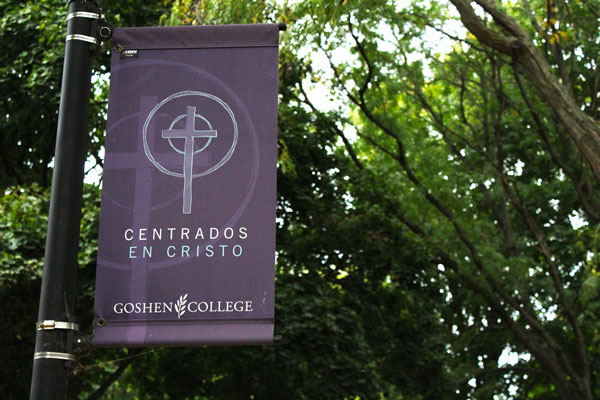Goshen College is inviting 20 Latino and African-American high school students from Christian denominations across the United States to take part in a two-week Study-Service Theology Term.
The first SSTT will take place in June 2017, when Keith Graber Miller, a professor of Bible, religion and philosophy, will lead the study and travel in Guatemala. The Lilly Endowment invited Goshen College to submit a proposal for a program involving high schools across the U.S. to motivate students to consider working in the church.“All Christian congregations across the country right now have a shortage of pastors,” said Graber Miller, “so one of the things we hope we can do is help young people at least think about studying theology, or at least think about committing their lives to at least one form of ministry or service in the church.”
Goshen was awarded a $600,000 grant from the Lilly Endowment, and students who are accepted into the program only pay a deposit of $100 to secure their place. A major portion of the grant will go toward funding the trip to Guatemala.
What differentiates this program from other Lilly-funded programs is that GC will take students overseas for a two-week period to concentrate on theological studies.
“Lilly has often funded programs run by seminaries that were designed to help high schoolers consider different vocations in the church,” Graber Miller said. “On this round, Lilly invited colleges to come up with creative ideas for programs to help young people think about their callings, to consider theological study and to explore the possibility of some form of ministry.”
As far as Graber Miller is aware, this is the first time that Lilly has paid for high school students to study abroad in Guatemala.
“I’m not aware that Lilly has ever funded a vocation program quite like this one — one that involves taking high schoolers to a two-thirds world setting to explore vocation,” he said. “But sometimes getting out of our comfortable contexts is essential for our self-reflection and for our deep learning, as we’ve discovered with more than 50 years of experience with SST.”
A large portion of the grant proposal was written by Graber Miller. Through the development of the program, Tom Meyers, director of international education and associate academic dean, worked as grant director.
“I serve as project director,” said Myers, “which means I have the responsibility of overseeing the program administratively, which includes working with the budget, writing annual reports to our funding source the Lilly Endowment and working with our faculty.”
Professors Jo-Ann Brant and Paul Keim will be responsible for continuing work with students through orientation sessions and a 40-hour internship in the student’s home congregation.
“I will have responsibility for helping to shape the re-entry and follow up aspects of the program for those returning from Guatemala,” Keim said.
Gilberto Perez, senior director of intercultural development and educational partnerships, has made contact with Latino churches and networks, newspapers and other communities to spread the word of the program. Regina Shands Stoltzfus, professor of peace, justice and conflict studies, has helped with building contacts and consulting, especially as it relates to bringing diverse communities to the program.
The Study-Service Theology Term is based on of GC’s SST model. Graber Miller said that the program will be hosted by SEMILLA, a Latin American Anabaptist Seminary for men and women of Central America, located in Guatemala. SEMILLA will provide housing and faculty to teach the students.
The program will not only be confined to the walls of SEMILLA’s facilities. Graber Miller plans to take a few trips to the countryside, primarily to focus on reflecting applications of biblical insights in-text to contemporary living conditions of a third of the world’s population. “The program is intended to focus on vocation, calling and Jesus’ ministry through a cross-cultural context,” Graber Miller said.
Students will be asked to submit a 300-word statement, a recommendation letter from a priest or pastor or mentor and a high school course transcript. The deadline to submit all application material is Oct. 30. Priority will be given to Latino and African-American students in hopes to draw in and increase the number of diverse prospective students at GC.
With GC’s move towards becoming a Hispanic Serving Institution, the desire to become a more diverse campus will hopefully be impacted by this program. Graber Miller said that the majority of the applications that have been received are from Latino or African-American students. As Graber-Miller sifted through the applications he said he was encouraged by the caliber of the applications.
“Over the last week, application materials were coming in every day,” he said. “It’s an excellent opportunity for young people to travel and reflect on where their lives may lead. It’s open to young people from any denominational group in the U.S.”



